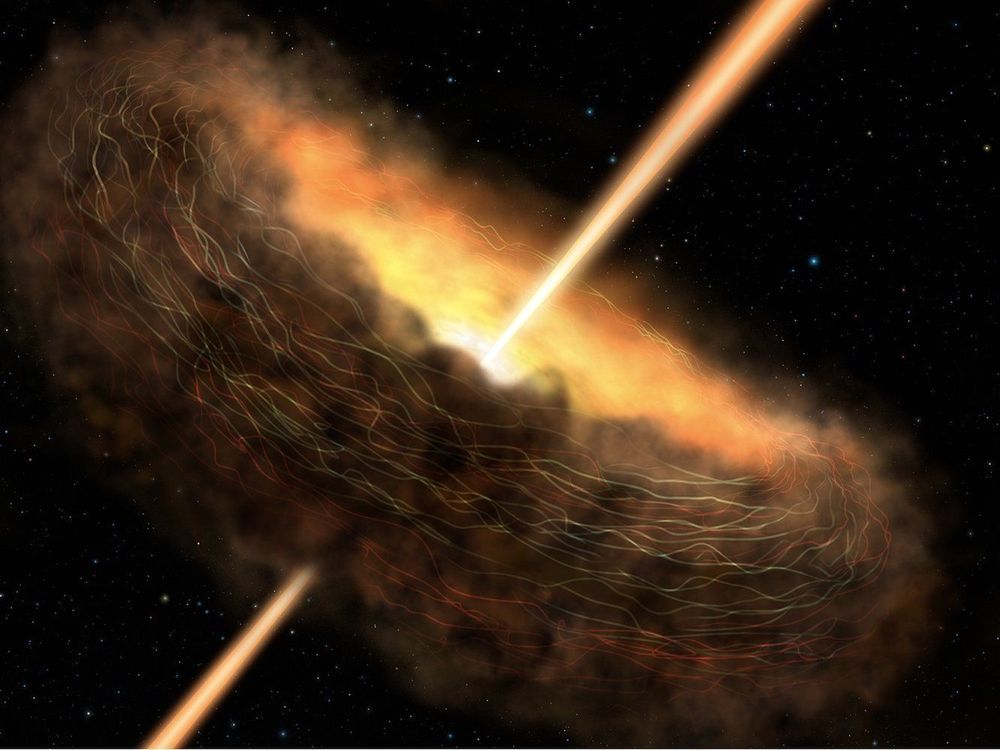Get the latest international news and world events from around the world.
SpaceX CEO Elon Musk says major Starship engine bug is fixed as Raptor testing continues
Starhopper awaits its first truly flightworthy Raptor as CEO Elon Musk says SpaceX may have solved the technical bug delaying hop tests. (NASASpaceflight — bocachicagal, SpaceX)
Scientists succeed in mapping every neuron in a worm, a breakthrough in neuroscience
In a way, the connectome is also a foundation for understanding far more complex nervous systems like our own.
“If a worm can do so much with so few neurons, and we have orders of magnitude more neurons,” Paul Sternberg, a biology professor at the California Institute of Technology in Pasadena, told Scientific American, “then we’re amazing.”
The datasets that were generated from and analysed in the current study are available at wormwiring.org


Voracious Black Holes Could Feed Alien Life on Rogue Worlds
O.o…
Black holes are engines of destruction on a cosmic scale, but they may also be the bringers of life. New research on supermassive black holes suggests that the radiation they emit during feeding frenzies can create biomolecular building blocks and even power photosynthesis.
The upshot? Far more worlds roaming the Milky Way and beyond could be suitable to life, the researchers speculated.
For their new study, published May 24 in the Astrophysical Journal, scientists created computer models to look at the radiating disks of gas and dust called active galactic nuclei, or AGN, that swirl around supermassive black holes. Some of the brightest objects in the universe, AGN form as a black hole’s gravity binds matter. As that matter swirls around a black hole, it releases incredible amounts of light and radiation. [9 Ideas About Black Holes That Will Blow Your Mind].

Fermi Paradox: First Contact with Alien Syntellects in Extra Dimensions is More Than a Possibility
I used to think that we live in some sort of a “cosmic jungle”, so the Zoo Hypothesis (like Star Trek Prime Directive) should be the correct explanation to the Fermi Paradox, right? I wouldn’t completely rule out this hypothesis insofar as a theorist Michio Kaku allegorically compares our earthly civilization to an “anthill” next to the “ten-lane superhighway” of a galactic-type civilization. Over time, however, I’ve come to realize that the physics of information holds the key to the solution of the Fermi Paradox — indications are we most likely live in a “syntellect chrysalis” instead of a “cosmic jungle.”
Just like a tiny mustard seed in the soil, we’ll get to grow out of the soil, see “the light of the day” and network by roots and pollen with others, at the cosmic level of emergent complexity — as a civilizational superorganism endowed with its own advanced extradimensional consciousness. So, one day our Syntellect, might “wake up” as some kind of a newborn baby of the intergalactic family (or multiversal family, for that matter – that remains to be seen) within the newly perceived reality framework. Call it the Chrysalis Conjecture, if you’d like.*.

What If Humanity Was A Type III Civilization? | Unveiled
According to the Kardashev Scale, a Type III Civilization should be able to harness the power of an entire galaxy… Humanity isn’t quite there yet, but what will our lives be like if we ever do become an advanced, Type III, intergalactic species? In this video, Unveiled looks far into the future, to see how far humankind could possibly go as we continue to explore and understand the universe around us…
This is Unveiled, giving you incredible answers to extraordinary questions!
Find more amazing videos for your curiosity here:
What If There’s A Mirror Universe — https://www.youtube.com/watch?v=dvs-H5vU3NY
What If Andromeda Collides With the Milky Way? — https://www.youtube.com/watch?v=X5-fSADihd4
Are you constantly curious? Are you a fiend for facts? Then subscribe for more from Unveiled ► https://goo.gl/GmtyPv
#KardashevScale #Civilization #Advanced #Future #Futuristic

How to Track the LightSail 2 as It ‘Sails’ Around Earth
Last week, the LightSail 2 officially made its first contact with Earth. The solar-powered spacecraft will be sailing around Earth’s orbit for the next year, all part of a mission to prove that solar sailing is a viable mode of space exploration.
If successful, the hope is that solar sailing could be used in other spacecraft going forward, something that could allow us to explore further in space at a lower cost than is currently possible.
Demonstrations of DARPA’s Ground X-Vehicle Technologies
DARPA’s Ground X-Vehicle Technologies (GXV-T) program aims to improve mobility, survivability, safety, and effectiveness of future combat vehicles without piling on armor. The demonstrations featured here show progress on technologies for traveling quickly over varied terrain and improving situational awareness and ease of operation.
These demonstrations feature technologies developed for DARPA by:
1) carnegie mellon university, national robotics engineering center. 2) honeywell international 3) pratt & miller 4) qinetiq 5) raytheon BBN technologies